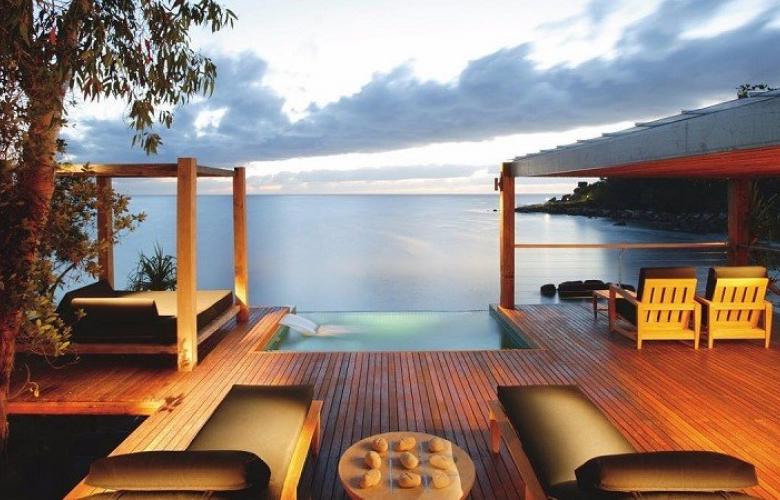Investors and tourists return to islands on the Great Barrier Reef
Contact
Investors and tourists return to islands on the Great Barrier Reef
Investors and tourists are returning to islands on the Great Barrier Reef after wild weather and economic woes threatened this iconic part of Australia, one of the seven wonders or the natural world - reports JLL Hotels.
Investors are helping reclaim some of Australia’s most stunning islands from ruin, laying the foundations for a tourism boom and a new wave of capital to the country’s far north coast.
Islands along the Great Barrier Reef, one of the seven wonders of the natural world, were hit by the combined force of cyclones and the global financial crisis between 2011-2017, resulting in a steep drop in visitors. But a number of large development projects are poised to turn fortunes around.
“The market is in the midst of a complete overhaul with unprecedented interest from experienced resort investors,” says Tom Gibson, Senior Vice President of JLL’s Hotels & Hospitality Group.
Hayman Island just reopened with an InterContinental resort after a A$140 million revamp from Malaysian conglomerate Mulpha Australia.
At Lindeman Island, Chinese tycoon William Han, through his development company White Horse Australia, is investing A$600 million to develop two new resorts and a residential complex which will be managed by luxury resorts operator Banyan Tree.
Daydream Island is open for business after a A$104 million makeover by China Capital Investment Group, while Hamilton Island – the largest in the region and Bedarra Island have had multi-million dollar redevelopments in recent years.
The weak Australian dollar and an underserved luxury accommodation market have drawn investors. Highly-priced markets of Sydney and Melbourne also drove demand.
“It has allowed Queensland to emerge as one of Australia’s more liquid hotel investment markets, presenting a broad spectrum of opportunities that are supported by solid fundamentals,” says Gibson.
The comeback
A growing demand for luxury hotels from international tourists and increasingly domestic ones, is behind the standout performance of hotels at the Great Barrier Reef compared to other Australian markets. In 2018 they achieved 15 per cent growth in terms of revenue per available room, and the highest average daily rate in the first half of 2019 at A$384.
At Hamilton Island’s Qualia resort, and in Hayman Island, advertised room rates are up to A$6,740 and A$5,300 respectively per night, which are some of the highest in the country.
All-inclusive and luxury resorts on the Great Barrier Reef only account for 350 rooms of the Australian market. That’s a small catchment when you consider the scale of the region,” Gibson says.
“Hamilton Island, Lizard Island and Bedarra Island average less than 40 rooms, yet account for some of the highest occupancies and revenue-per-room in Australia, which highlights the scope for more luxury lodges to enter the market."
Risks versus rewards
While extreme tropical weather patterns present a risk to island investments, advanced building technology is allowing owners to develop more sustainable and financially viable structures.
Adam Bond, whose father Peter is selling the currently-closed Dunk Island Resort, believes the opportunities outweigh the risks.
“As with any business there are challenges, of course. To pretend they don’t exist and islands aren’t potentially fraught assets, or difficult businesses to manage is denying truth. But the reality is they also present amazing opportunities and a lot of people made a lot of money from these assets in the past and they will in the future,” he told TV program 60 Minutes.
Mainland activity
As investor interest builds, new infrastructure developments in gateway cities aim to funnel tourists to the islands. Projects include a A$1.3 billion second runway way at Brisbane Airport, a new A$158 million Brisbane International Cruise Terminal and a A$127 million extension to the port of Cairns.
The Queensland state government is providing further momentum with a A$25 million Great Barrier Reef Rejuvenation Fund to incentivise new owners through dollar-for-dollar funding on island upgrades.
Another A$25 million has been provided to the owners of Great Keppel Island for the installation of mains power and water.
When the fund was launched last year, Queensland tourism industry development minister Kate Jones described the islands as an important part of the Queensland tourism plan.
“The Great Barrier Reef contributes $6 billion to our economy and supports more than 60,000 jobs – it is without a doubt Queensland’s greatest asset,” she said.
Investor optimism is already spreading across the state, as evidenced by a string of hotel purchases over the past six months, including Silky Oaks Lodge in far north Queensland acquired by US-based KSL Capital Partners for A$20 million, and NEXT Hotel Brisbane, bought by Melbourne-based fund manager Salter Brothers for A$150 million.
“This investment activity along the coastline will provide a backbone to the Great Barrier Reef region and completely reposition the tourism product offering,” Gibson said.
Click here to visit the JLL Hotels website
See also:
Queensland Government partners with Cruise Whitsundays to build $8 million Reefworld pontoon







